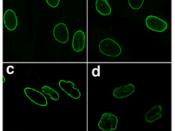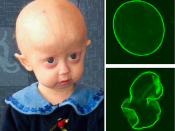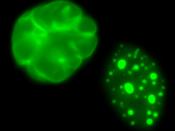Progeria, also known as Hutchinson-Gilford Progeria syndrome (HGPS), is a rare disease that causes children to age eight times faster than they are supposed to. It was discovered in England in 1886 and was named after Jonathan Hutchinson, who first discovered it and Hastings Gilford, who was the first to refer to the disease as Progeria. The name Progeria is derived from Greek and means "prematurely old". Progeria is commonly referred to as an "early aging disease." It is fortunately an extremely rare disease. Only 100 cases have been reported since it was discovered and it is estimated to affect only 1 to 2 children in 8 million. There are currently only 4 kids in the UK and about 40 around the world that are affected with the disease. It is, however, a particularly tragic disease in that it typically strikes children before the age of 10 years, and they usually die at about 13.
Most children don't live beyond their teenage years, though one or two children affected with Progeria have lived to their early 20s. The life-span for children with Progeria ranges from 7 to 27.5 years.
Progeria is an extremely rare genetic disease that accelerates the aging process to about seven or eight times the normal rate. Because of this accelerated aging, a child of ten years will have similar respiratory, cardiovascular, arthritic conditions that a 70-year-old would have. Children that have Progeria are normal at birth and their growth stops at the end of the first year. They then possibly encounter a slow increase to the size of a 2 or 3 year old child. They are usually short and their total height usually never exceeds 4 feet or the height of a 5 year old child. They develop a relatively large head with a...


